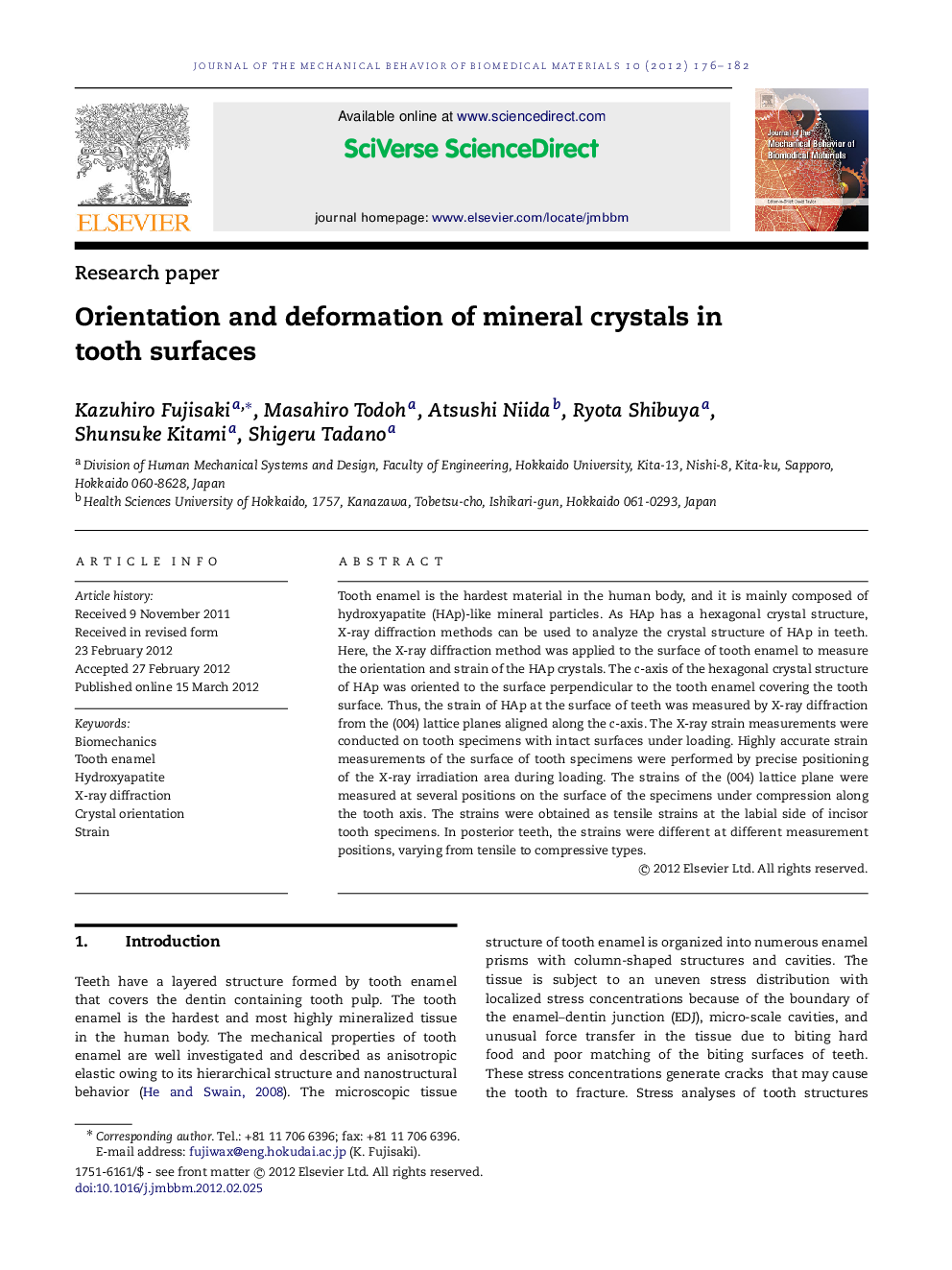| Article ID | Journal | Published Year | Pages | File Type |
|---|---|---|---|---|
| 811057 | Journal of the Mechanical Behavior of Biomedical Materials | 2012 | 7 Pages |
Tooth enamel is the hardest material in the human body, and it is mainly composed of hydroxyapatite (HAp)-like mineral particles. As HAp has a hexagonal crystal structure, X-ray diffraction methods can be used to analyze the crystal structure of HAp in teeth. Here, the X-ray diffraction method was applied to the surface of tooth enamel to measure the orientation and strain of the HAp crystals. The cc-axis of the hexagonal crystal structure of HAp was oriented to the surface perpendicular to the tooth enamel covering the tooth surface. Thus, the strain of HAp at the surface of teeth was measured by X-ray diffraction from the (004) lattice planes aligned along the cc-axis. The X-ray strain measurements were conducted on tooth specimens with intact surfaces under loading. Highly accurate strain measurements of the surface of tooth specimens were performed by precise positioning of the X-ray irradiation area during loading. The strains of the (004) lattice plane were measured at several positions on the surface of the specimens under compression along the tooth axis. The strains were obtained as tensile strains at the labial side of incisor tooth specimens. In posterior teeth, the strains were different at different measurement positions, varying from tensile to compressive types.
Graphical abstractFigure optionsDownload full-size imageDownload high-quality image (373 K)Download as PowerPoint slideHighlights► X-ray diffraction methods were applied to the tooth surface. ► The cc-axis of apatite crystals was oriented to the surface perpendicular direction. ► The (004) lattice plane could be used for strain measurements of the tooth surface. ► The strain measurement was conducted on the tooth specimens under loading.
